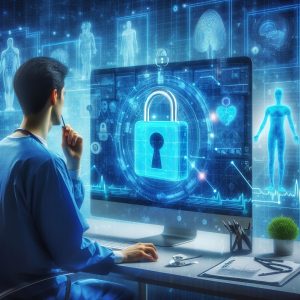HIPAA Compliance and Software Security
Table of Contents
HIPAA sets the standard for protecting sensitive patient information. Healthcare organizations must follow HIPAA. This is crucial to protect patient data from unauthorized access and breaches. One key aspect of HIPAA compliance is software security.
It plays a vital role in protecting patient information. This section provides an overview of HIPAA’s rules. It also covers the importance of software security for staying compliant.
Best Practices for Securing Software
- Encryption:
Utilize strong encryption methods to protect data both at rest and in transit. If someone intercepts data, encryption prevents them from reading it. This is true without the right decryption key. - Access Controls:
Implement strict access controls to limit who can access protected health information (PHI). Use role-based access controls. They ensure that individuals only have access to the data they need for their roles. - Regular Updates:
Keep software up to date with the latest security patches and updates. Regularly updating software helps to protect against known vulnerabilities and weaknesses. - Security Testing:
Do regular security tests. These include penetration and vulnerability assessments. They find and fix security weaknesses in software. - Audits and Monitoring:
Perform regular security audits to ensure compliance with HIPAA requirements. Use monitoring tools. They detect and respond to unauthorized access attempts and other security incidents.
Examples of Software Security Measures
- Encryption:
Healthcare software uses AES to encrypt data at rest. It uses TLS to encrypt data in transit. For example, Epic Systems is a top electronic health record (EHR) vendor. It encrypts data both at rest and in transit. It uses AES and TLS. - Access Controls:
Healthcare software platforms implement role-based access controls (RBAC) to limit access to PHI. Cerner Corporation is another big EHR vendor. It uses RBAC to ensure that only authorized staff access patient records. Access is based on their roles in the healthcare organization. - Regular Updates:
Software vendors, like Allscripts Healthcare Solutions, provide regular updates to their software. The updates fix security holes and improve protection against new threats. These updates include patches and bug fixes. They make sure the software stays secure and follows HIPAA rules. - Security Testing:
Health IT companies, like eClinicalWorks, do regular security testing. This testing includes penetration testing and vulnerability assessments. They do it to find and fix security risks. The tests help ensure their software meets HIPAA’s strict security needs. - Audits and Monitoring:
Healthcare software providers, like NextGen Healthcare, use tools to audit PHI access. They also use tools to monitor it. They use the tools to find any unauthorized or suspicious activity. The tools help ensure HIPAA’s audit trail requirements. They also protect patient information from unauthorized access or breaches.
Future Trends in Software Security for HIPAA Compliance
1. AI and Machine Learning:
AI and ML are expected to enhance software security for HIPAA. These technologies can help detect and respond to security threats in real-time. They also help find patterns of unauthorized access or potential breaches.
2. Blockchain Technology:
Blockchain technology is gaining traction in healthcare. It can enhance data security and privacy. Blockchain uses decentralized and immutable ledgers. It can help secure patient data and ensure its integrity. This meets HIPAA’s rules for data protection.
3. Zero Trust Security Model:
The Zero Trust security model is gaining popularity. It is used to secure software and networks. This approach assumes that no user or device can be trusted. They might be inside or outside the network. Instead, access to resources is granted based on strict ID checks. They also require continuous monitoring. This aligns with HIPAA’s least privilege rule.
4. Enhanced Data Encryption:
Cyber threats are growing more sophisticated. There is a trend to use stronger encryption. This includes the use of homomorphic encryption. It allows for computation on encrypted data without decrypting it. This ensures data privacy and security.
5. Continuous Compliance Monitoring:
Companies are shifting from periodic audits to continuous compliance monitoring. They are using automated tools. The tools can find and fix compliance issues in real-time. They ensure that software obeys HIPAA rules all the time.
6. Integration of Security into DevOps Practices:
DevSecOps integrates security into DevOps. It is becoming more common in software development. This approach ensures that security is not an afterthought. It is integrated throughout the software development lifecycle. This improves the overall security of healthcare software.
Conclusion
In this blog post, we’ve explored the vital role of software security. It is crucial for maintaining HIPAA compliance. We’ve discussed best ways to secure software. We’ve also covered examples of software security. And we’ve talked about future trends in software security for HIPAA compliance.
Software security is vital in healthcare. It protects patient data and ensures HIPAA compliance. Healthcare organizations must put software security first. They must stay updated with security practices and use innovative solutions. These steps will protect patient information well. Doing so lets them protect patient data. It also helps them keep HIPAA compliance. This is key in a more digital healthcare landscape.



